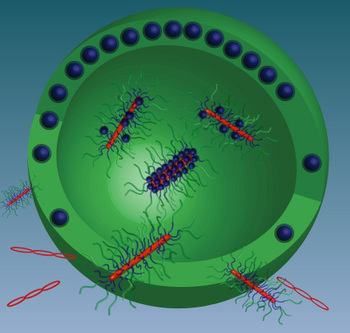The technique to transfer specific gene into target cells is the key methodology in the research and development of cutting-edge medical technology. Successful transfection needs a system to efficiently deliver gene into a target cell. Up to now, virus vectors and lipid/polymer-based reagents were widely used mainly in the transfection into cultured cells, and moreover showed their validity in the application of local administration. On the other hand, gene therapy including cancer treatment and regenerative medicine requires the system that can achieve selective transfection into a target tissue/cell in a body. However, it has been difficult to accomplish such selective transfection using the aforementioned virus vectors and reagents. In addition, the virus vectors and reagents still have room for improvement in regard to safety.
Here, Professor Kazunori Kataoka’s research group in the University of Tokyo (Graduate School of Engineering) has developed a light-responsive nanomachine by integrating multiple functions into a three-layered polymeric micelle as the novel gene delivery system that excels conventional delivery systems and provides selective high transfection efficiency. This nanomachine for the first time accomplished light-selective gene transfer in a subcutaneous tumor in a mouse after systemic administration.
The nanomachine is systemically injectable and possesses better safety and selectivity than conventional transfection technologies. Thus, the nanomachine may be applied to the gene therapy of intractable diseases such as cancer and arteriosclerosis.
